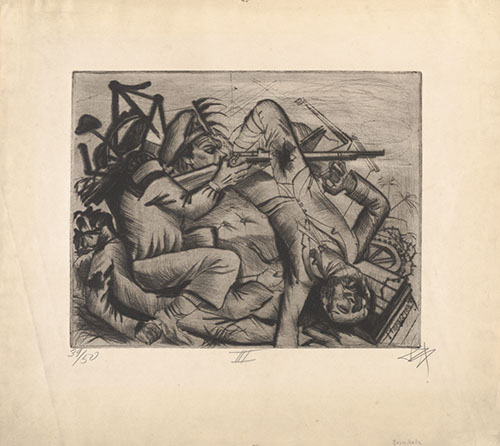 Otto Dix (German, 1891-1969), The Barricade, from the series Death and Resurrection, 1922, drypoint, 10.69 x 13.63 inches (plate). Acquired with funds provided by the Walter R. Beardsley Endowment for 20th Century Art, 2014.029.001
Otto Dix (German, 1891-1969), The Barricade, from the series Death and Resurrection, 1922, drypoint, 10.69 x 13.63 inches (plate). Acquired with funds provided by the Walter R. Beardsley Endowment for 20th Century Art, 2014.029.001
On the centennial anniversary of the beginning of World War I, the Nanovic Institute for European Studies presents a series of lectures by historians focused on new data and interpretations. What has been mistaken or overlooked in standard histories? What new data sheds light on the war’s causes? Did old empires disappear entirely? What were the long-term effects of the war on the environment? Join us for fresh looks at the catastrophe that in many ways defined modern Europe.
October Speaker
Tait Keller
Assistant Professor and Director of the Environmental Studies and Sciences Program
Rhodes College
Topic:
Grim Fields: Militarized Environments of the First World War and the Making of the 20th Century
Seeing what George Kennan called the twentieth century’s “seminal catastrophe” from an environmental perspective changes our understanding of the First World War. Iconic images of the Western Front include ravaged farmlands, charred forests, and muddy quagmires, but few have investigated the war’s enduring environmental impacts on and off the battlefields. This talk will focus on how energy schemes to fuel both bodies and machines transformed environments around the world. To keep soldiers and engines in action, militaries commandeered energy resources throughout the biosphere and altered ecosystems. By analyzing how warfare and energy regimes coevolved over the course of the Great War we can better understand the intersections of military violence, human victimization, and environmental change during the twentieth century.